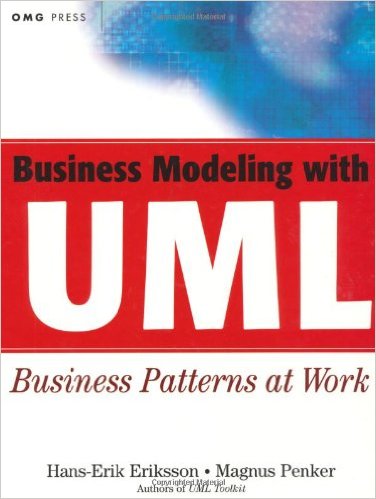White Paper: Enterprise Architecture Using BDD, UML, and Enterprise Architect
Introduction
In today's complex and rapidly evolving IT landscape, effective enterprise architecture (EA) is crucial for organizations to achieve their strategic goals. By providing a blueprint for the organization's IT infrastructure, EA helps ensure alignment between business objectives and technical capabilities. This white paper will explore the application of Behavior-Driven Development (BDD), Unified Modeling Language (UML), and Enterprise Architect tool in the design and development of complex systems.
Understanding BDD, UML, and Enterprise Architect
-
BDD: A collaborative approach to software development that focuses on defining desired behaviors and outcomes from the perspective of stakeholders.
-
UML: A standardized modeling language used to visualize, specify, construct, and document the artifacts of software systems.
-
Enterprise Architect: A comprehensive modeling and software engineering tool that supports various modeling languages, including UML.
The Role of Enterprise Architecture in Complex Systems
Enterprise architecture plays a pivotal role in the design and development of complex systems by:
-
Providing a Holistic View: EA offers a comprehensive overview of the organization's IT landscape, including its components, relationships, and dependencies.
-
Aligning IT with Business Goals: EA ensures that IT investments and initiatives are aligned with the organization's strategic objectives.
-
Managing Complexity: EA helps manage the complexity of large-scale systems by breaking them down into smaller, more manageable components.
-
Facilitating Communication: EA provides a common language and visual representation that can be used to communicate effectively among stakeholders.
Applying BDD, UML, and Enterprise Architect
-
Define Business Requirements: Use BDD to capture the desired behaviors and outcomes of the system from the perspective of stakeholders. This can be done using Given-When-Then scenarios.
-
Create UML Models: Use UML to model the system's architecture, including use case diagrams, class diagrams, sequence diagrams, and component diagrams. These models can be used to visualize the system's structure, interactions, and dependencies.
-
Leverage Enterprise Architect: Utilize Enterprise Architect as a modeling tool to create and manage UML diagrams, generate code, and trace requirements to implementation.
-
Iterative Development: Employ an iterative development approach, continuously refining the architecture and design based on feedback and changing requirements.
Benefits of Using BDD, UML, and Enterprise Architect
-
Improved Communication: BDD fosters collaboration and understanding among stakeholders by using a shared language.
-
Enhanced Quality: UML models provide a visual representation of the system, helping to identify potential issues and improve quality.
-
Increased Efficiency: Enterprise Architect streamlines the modeling process, saving time and effort.
-
Better Traceability: By linking requirements to design artifacts, EA enables better traceability and accountability.
Challenges and Considerations
-
Complexity: Modeling complex systems can be challenging, requiring careful consideration of various factors.
-
Tool Proficiency: Effective use of Enterprise Architect requires a certain level of proficiency.
-
Cultural Change: Adopting BDD and EA may require a cultural shift within the organization.
Conclusion
By effectively combining BDD, UML, and Enterprise Architect, organizations can develop robust and scalable enterprise systems that align with their business goals. This approach can improve communication, enhance quality, and increase efficiency in complex system design and development.
References
Note: These are general references that can be used for a white paper on enterprise architecture using BDD, UML, and Enterprise Architect. You may need to replace the placeholders with specific citations based on the sources you've used.
Books
-
Gojko Adzic. Specification by Example: How to Write Tests That Prove Your Software Works. Manning Publications, 2011.
-
UML Distilled: A Brief Guide to the Standard Object Modeling Language. Addison-Wesley Professional, 2004.
-
Sparx Systems. Enterprise Architect User Guide. Sparx Systems, 2023.
Articles and Papers
-
Agile Alliance. Behavior-Driven Development (BDD). [invalid URL removed]
-
UML.org. Unified Modeling Language (UML). https://www.uml.org/
-
Enterprise Architect Documentation. [invalid URL removed]
Online Resources
-
BDD Community. BDD Community. [invalid URL removed]
-
UML Resources. UML Resources. [invalid URL removed]
-
Enterprise Architect Tutorials. https://sparxsystems.com/resources/tutorials/
Additional Tips:
-
Cite specific sections or pages where you've referenced information from the sources.
-
Use a consistent citation style (e.g., APA, MLA, Chicago) throughout your paper.
-
Verify the credibility of your sources to ensure their accuracy and relevance.
-
Consider adding more recent publications if available to reflect current trends and advancements in enterprise architecture, BDD, and UML.
By following these guidelines, you can create a well-referenced and informative white paper on enterprise architecture using BDD, UML, and Enterprise Architect. ontact ias-researh.com



